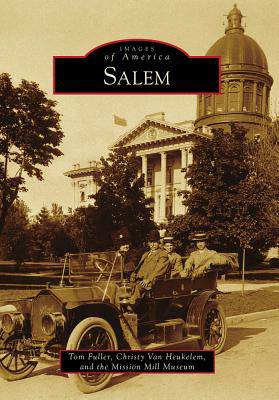
- Afhalen na 1 uur in een winkel met voorraad
- Gratis thuislevering in België vanaf € 30
- Ruim aanbod met 7 miljoen producten
- Afhalen na 1 uur in een winkel met voorraad
- Gratis thuislevering in België vanaf € 30
- Ruim aanbod met 7 miljoen producten
Zoeken
€ 34,95
+ 69 punten
Uitvoering
Omschrijving
Long before the city of Salem got its name, the lush valley was a favorite winter camping location for the Kalapuya tribe. Jason Lee first ventured to Oregon in 1834, at the invitation of Northwest tribes, creating a mission and a settlement here. Native Americans called it Chemeketa. William H. Willson, who laid out the city plan in 1851, called it Salem. Both words mean peace. Salem's central location, in the middle of the Willamette Valley's agricultural belt, made it an ideal location for the new capital of Oregon. Since then, Salem's character has largely been influenced by the presence of woolen mills, crop production, and many state institutions. Surviving devastating floods and fires in all three state capitol buildings, Salem and its people have a history of resilience, leadership, and public service.
Specificaties
Betrokkenen
- Auteur(s):
- Uitgeverij:
Inhoud
- Aantal bladzijden:
- 128
- Taal:
- Engels
- Reeks:
Eigenschappen
- Productcode (EAN):
- 9780738571393
- Verschijningsdatum:
- 15/06/2009
- Uitvoering:
- Paperback
- Formaat:
- Trade paperback (VS)
- Afmetingen:
- 170 mm x 241 mm
- Gewicht:
- 317 g

Alleen bij Standaard Boekhandel
+ 69 punten op je klantenkaart van Standaard Boekhandel
Beoordelingen
We publiceren alleen reviews die voldoen aan de voorwaarden voor reviews. Bekijk onze voorwaarden voor reviews.








